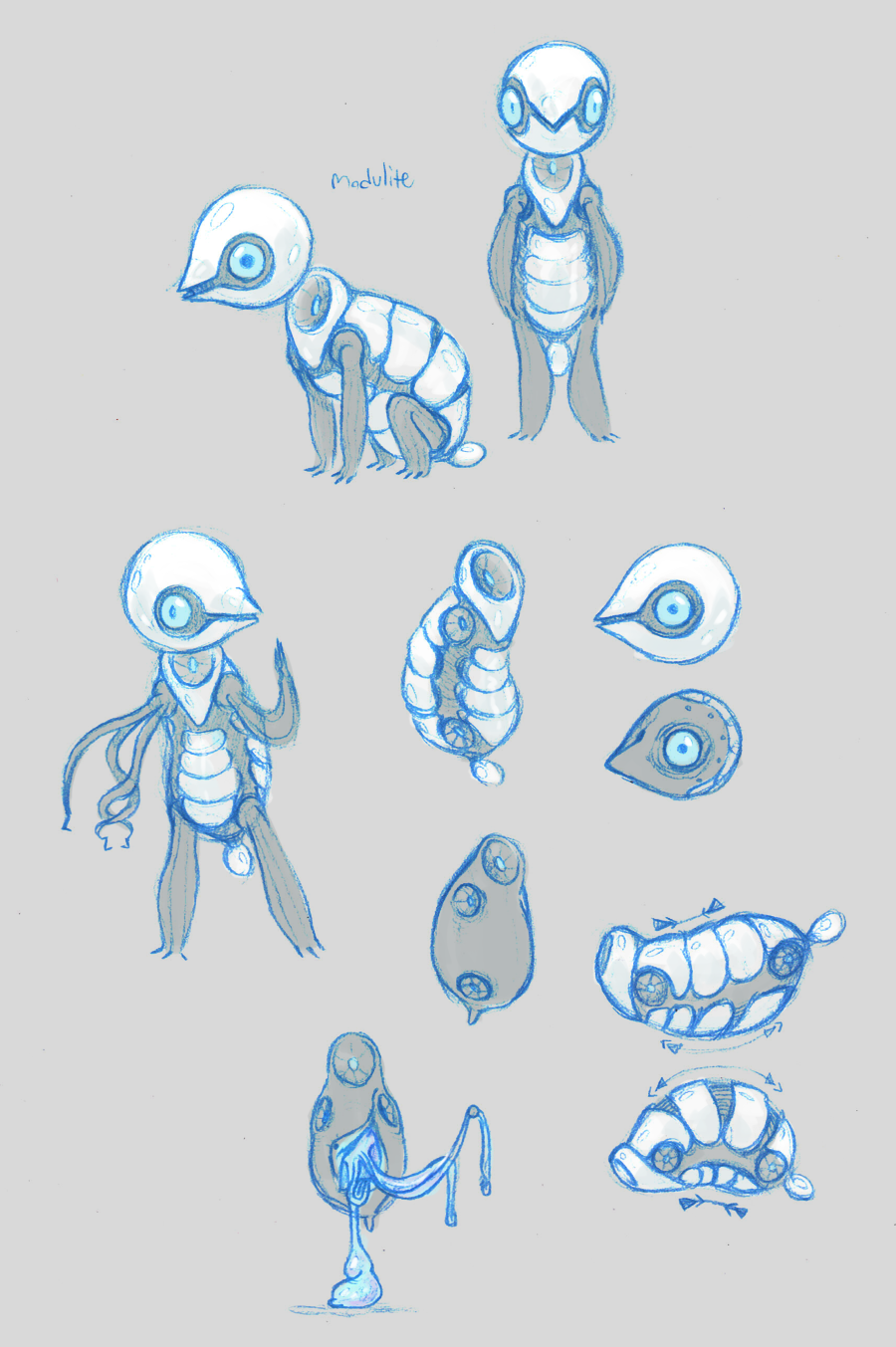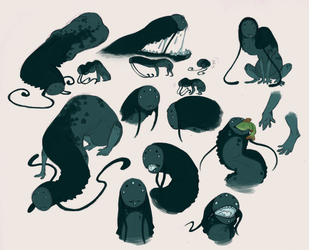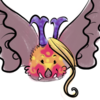Sign In
CloseOn Tuesdays and Thursdays I have a very long class schedule, so I often times use leeway time between my classes on those days to create a small conceptual idea.
This is the concept I had for some time in late March.
Small, semi-organic, semi-synthetic alien lifeforms called Modulites. About a foot and a half(~46 cm) tall when standing upright, these highly intelligent beings are cryptic at best in their origins and tend to be rather flaky when questioned about it. Modulites are docile and conflict-avoidant in nature and prefer to be left to their work in technological fields, especially those concerning robotics and assembly. Anatomically, they are carbon-based structures with an exoskeletal system housing the inner workings within. The main body system, which is grey-colored in these sketches, is a structure based more or less upon carbon nanotubing, renowned for both its strength as well as flexibility. This structure makes up the torso system, the cranial orb, and the limb modules. The outer plating, shown being a white color in these illustrations, is essentially a rough exoskeleton. The composite material of the exoskeleton is a type of bioplastic, both tough and protective but with mild give and flex so as to allow movement and forgiving rebound when struck or compressed. The Modulite is a curious creature in that, as its name suggests, it works in a module system itself. Being smart and inventive, there are many available limb modules for many different uses. The standard limb modules are pictured here, being made of long and flexible tubing to form the limb musculature and ending in small hardened claws for manipulation of objects in its environment. In standard modules, the limb tubing can also be twisted into more refined points, woven into small nets for carrying handheld objects, drills, cutting utensils, and more. Other module models include power and welding tools, surgical equipment, minor weaponry, and high-grip clamps for work in low-gravity conditions. The only true constant in an individual's body is its cranial orb and main torso, and even then the bioplastic exoskeletons can be switched out for different parts, ie. a stronger cranial shell or a high-rimmed neck collar.
The Modulite head is noticeably a floating object, held relatively in place by electromagnetism with a current ensuring the connectivity of the brain to the central core and module base nodes. The cranium has the ability to float out a small but respectable distance away from the body for means of getting better viewing. It is possible to decapitate and kill a Modulite by disrupting the current between the cranial orb and the spinal node on the torso via physically blocking the path with non-conductive metal, or by disrupting the electromagnetic path with counter signals hand selected to oppose an individual's signature pathing. If immersed into water, a Modulite will seize, though not be killed immediately unless it is left submerged for a long period of time. If drawn out of water quickly enough, an individual will experience what can be likened to a simple concussion that can be recovered from normally.
Modulites that work in dangerous conditions where electrical currents and obstructions can damage the node pathing, special high-rimmed and insulated neck collars are installed on the torso, as well as having insulated o-rings installed on the limb module nodes.
Inner organs are very simple structures consisting of what appears to be exclusively a nervous system, with the brain and eyeballs in the cranial orb, a central core in the torso, and the core's tubing that extend to the limb module nodes.
Feeding is a mystery concerning the Modulite race, though it is known that the bioplastics in their exoskeletons are capable of photosynthesis, and it is likely that it uses this process to charge itself like a solar cell. The reproduction process is unknown.
The Modulites have no known home world nor recognizable empire of colonized planets. They appear to mainly exist as loose groups in multi-racial trading and diplomatic colonies. Social structure is unknown to outsiders.
Also I should mention that I imagine these guys have voices similar to the Tachikoma from Ghost in the Shell cuz I meAN WHO DOESN'T LOVE TACHIKOMAS AM I RIGHT.
Submission Information
- Views:
- 678
- Comments:
- 1
- Favorites:
- 17
- Rating:
- General
- Category:
- Visual / Digital





Link
LycheeMonster
A CUTIE FACE
and
y-yes wow come to me tachikomas speak to me